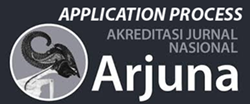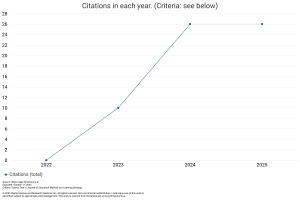Evaluation of English Language Material for the 9th Grader Student at SMP Nurul Islam Ngemplak Boyolali
DOI:
https://doi.org/10.59653/jemls.v2i01.475Keywords:
evaluation, adapting, adopting, macro skills, English language teachingAbstract
Teaching language in this global era demands mostly the creativity of the teachers, this is because in 21th century, students need to be critical thinkers, creative, communicative and collaborative. Therefore, the creativity of the teacher is manifested by evaluating the multiple resources and adapting or adopting them based on the contextualized learning situation including individual differences, styles and learners needs. It is also essential for the teacher to integrate the four macro skills in teaching language in order to make the students more communicative and collaborative. Hence, this paper presents the evaluation of the language teaching resources before and during applying them to the classroom contexts. The data were collected by document review and interview with the secondary school teacher. The data were analyzed qualitatively through interactive model. There is variation of the results based on the techniques of data collection. The interview shows that theoretically the teacher is creative to make the materials for students. Meanwhile, the document review findings show that there is a need of improvement on the way to evaluate and use the English materials based on the context. Finally, in evaluating the textbooks in order to adopt or adapt by adding or removing some materials to make English textbooks match with students’ contexts.
Keywords evaluation, adapting, adopting, macro skills, English language teaching.
Downloads
References
Ahmed, S. (2017). Authentic ELT materials in the language classroom: An overview. Journal of Applied Linguisfics and Language Research, 4(2), 181-202.
Akram, A., & Malik, A. (2010). Integration of language learning skills in second language acquisition. International Journal of Arts and Sciences, 3(14), 231- 240.
Byrd, P. (2001) Textbooks: Evaluation for Selection and analysis for implementation. In Celce-Murcia, M. Teaching English as a second or foreign language (3rd ed). US: Heinle & Heinle
Basra, S. M. & Purnawarman, P. (2018). An evaluation of English e-book “Think Globally Act Locally” for the ninth graders. Journal of English as a Foreign Language, 8(1), 57-74. https://dx.doi.org/10.23971v8i1.647
Chaqiqi, M. N. (2017). Analysis of speaking materials in the course book entitled “Scaffolding” for grade vii. [Undergraduate Thesis, Sunan Ampel State Islamic University, Surabaya].
Dudley-Evans, T., & St. John, A. M. J. (1998). Developments in English for specific purposes: A multi-disciplinary approach. Cambridge: Cambridge University Press.
Handayani, S., Suwarno, B. & Dharmayana, I W. (2018). Evaluation of Indonesian English textbook for the ninth graders of junior high school “Think Globally Act Locally” from EFL teachers’ perspectives. JOALL (Journal of Applied Linguistics and Literature), 3(2), 11-32. https://doi.org/10.33369/joall.v3i2.6281
Hutchinson, T., & Waters, A. (1987). English for specific purposes: A learning-centered approach. Cambridge.
Hinkel, E. (2010). Integrating the four skills: Current and historical perspectives. In (Ed.), The Oxford Handbook of Applied Linguistics: Oxford University Press, Retrieved from http://www.oxfordhandbooks.com/view/10.1093/oxfordhb/9780195384253.001.0001/oxfordhb-9780195384253-e-8
Karimnia, A., & Jafari, F. M. (2017). Critical ESP textbook evaluation: The case of visual arts textbook. Sustainable Multilingualism, 11(1), 219-236.
Klimova, B. F. (2014). Detecting the development of language skills in current English language teaching in the Czech Republic. Procedia - Social and Behavioral Sciences, 158, 85–92. https://doi.org/10.1016/J.SBSPRO.2014.1 2.037
McDonough, J., Shaw, C., & Masuhara, H. (2012). Materials and methods in ELT : a teacher’s guide. Wiley-Blackwell.
Mukundan, J. , Nimehchisalem, V, & Hajimohammadi, R (2011). Developing an English Language Textbook Evaluation Checklist: A Focus Group Study. International Journal of Humanities and Social Science Vol. 1 No. 12; September 2011.
Nation, I. S. P., & Macalister, J. (2010). Language Curriculum Design. New York: Routledge
Pusat Kurikulum dan Perbukuan, Balitbang, Kemdikbud. (2014). Bahasa Inggris Think Globally Act Locally. Jakarta.
Raghul, E., & Rajkumar, S. (2018). Integrating technology into English language teaching and learning: Possibilities and challenges, Journal of Social Sciences, 13 (1), 206-2012. doi: https://doi.org/10.3923/sscience.2018.206.212
Rahman, S., & Akhter, A. (2017). Skills teaching in ESL classroom: Discrete vs integrated. International Journal of English Language Teaching, 5 (4), 32-39.
Sadiku, L. M. (2015). The importance of four skills reading, speaking, writing, listening in a lesson hour. European Journal of Language and Literature, 1(1), 29-31.
Tajzad, M., & Ostovar-Namaghi, S. A. (2014). Exploring EFL learners' perceptions of integrated skills approach: A grounded theory. English Language Teaching, 7(11), 92-98.
Tomlinson, B. (2011). Material development in language teaching (2nd ed). Cambridge: Cambridge University Press.
Tomlinson, B. (2012). Materials Development for Language Learning & Teaching.
Language Teaching, 45(2), 143-179.
Urun, M. F. (2015). Integration of technology into language teaching: A comparative review study. Journal of Language Teaching and Research, 7(1), 76-87.
Downloads
Published
How to Cite
Issue
Section
License
Copyright (c) 2023 Gandung Wiratmoko, Muamaroh Muamaroh, Hepy Adityarini

This work is licensed under a Creative Commons Attribution-ShareAlike 4.0 International License.
Authors who publish with this journal agree to the following terms:
- Authors retain copyright and grant the journal right of first publication with the work simultaneously licensed under a Creative Commons Attribution-ShareAlike that allows others to share the work with an acknowledgement of the work's authorship and initial publication in this journal.
- Authors are able to enter into separate, additional contractual arrangements for the non-exclusive distribution of the journal's published version of the work (e.g., post it to an institutional repository or publish it in a book), with an acknowledgement of its initial publication in this journal.
- Authors are permitted and encouraged to post their work online (e.g., in institutional repositories or on their website) prior to and during the submission process, as it can lead to productive exchanges, as well as earlier and greater citation of published work (See The Effect of Open Access).
























